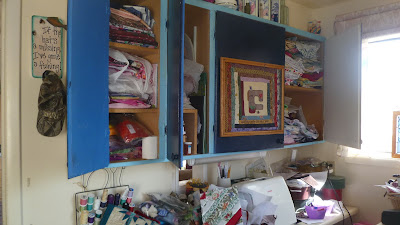The cover featured our oldest five boys holding a gigantic icicle that Steve had broken off from the north side of our poorly insulated home. It triggered many memories. We read and reread the book together, laughing, and sometimes crying. It was such a wonderful gift. We also learned a lot about those winter jaunts the boys used to take, which often ended up with them snowballing some unsuspecting victims, or sabotaging the neighbors’ doors, so that a pile a snow fell when they answered the doorbell.
 |
| Christmas 1979 |
 |
| Christmas program at the nursing home 1979 |
It was wonderful to read their recollections of what we had tried to orchestrate as parents. I believe that traditions are the glue that hold families, and communities together. They are shared experiences, which if repeated year after year, come to be not only enjoyed but expected.
Author Susan Lieberman makes this observation about traditions in her book, New Traditions: Redefining Celebrations for Today's Family: “Family traditions counter alienation and confusion. They help us define who we are; they provide something steady, reliable and safe in a confusing world.” There are many families in our community who have felt those benefits through their consistent efforts in establishing worthwhile traditions. |
| Lots of delicious goodies were also delivered to us, causing Aaron to ask once, "Are we poor --people are bringing us things?" |
Dan and Glenna Webb’s family was raised with many wonderful Christmas traditions. Their daughter Roxanne shared some of them: “We’d go Christmas Eve caroling after spending the whole day making candy and dipping chocolates, then returned home for chili and hot chocolate then more singing around the Christmas tree followed by Dad reading the Christmas story out of the Bible. Then, of course, the evening would not be complete without Mom telling the story of the little dog named Scats.”
Gayle Shumway recalls Christmas traditions she loved: “When the kids were little and we had a fireplace, they would write a letter to Santa and (after mom and dad read it) they’d put it in the fireplace where the ashes would go up the chimney and fly away to Santa.Blanding has a tradition of Christmas morning caravans. We would open our presents, put on our new clothes and take our favorite gift to “show and tell” and proceed to Grandma's house to eat waffles, strawberries and whipped cream, after we opened our presents. Then off again we’d go to visit relatives and friends to see what Santa brought to them and usually have a treat. As we traveled between houses we would see other families, sometimes still in their PJ's; we would wave excitedly to each other as we celebrated the day in the Blanding Christmas Caravans.
We now have a box of Nativity costumes for Christmas Eve. The children dress up and pose as we read the Christmas story from the Bible. We also draw names within the family for gift giving and we opened those presents on Christmas Eve.”
Claudia Shumway Orr remembered celebrating Christmas in Blanding: "When I was young my parents, brother and I were the only ones at home. My mother always read from a book " A Story to Tell", a story entitled "The Christmas Legend. As I got older and had children she always managed to read it to them sometime during the Christmas season. When our children were old enough to participate we started the tradition of reading the account of the Savior's birth in Luke, interspersed with Christmas carols, as the children acted the parts. We still have the same tradition each Christmas Eve with our grandchildren and great-grandchildren. We meet at our home and have dinner first then the nativity story, then we hand out presents. Sometimes someone in the family will feel creative enough to write a play for the kids to perform, but it always portrays the nativity as it is written in Luke. The younger children seem to love doing it. We usually have to coaxthe older ones but they always come through for us."
 |
| Wise men and shepherds breaking the pinata at the Nursing home. |
It’s never too late to start a Christmas tradition, and the effort is worth it. Let this be the year!




























